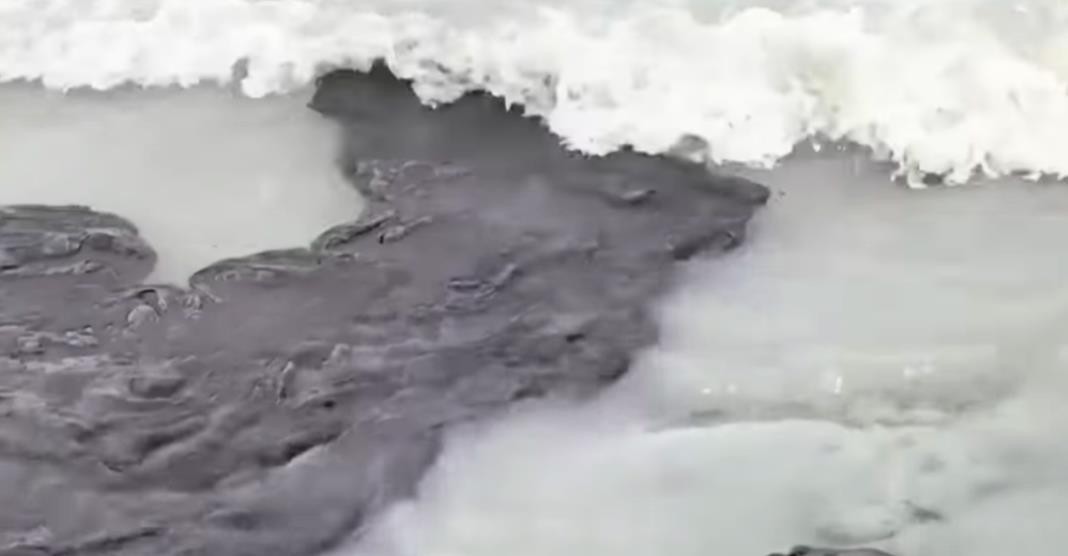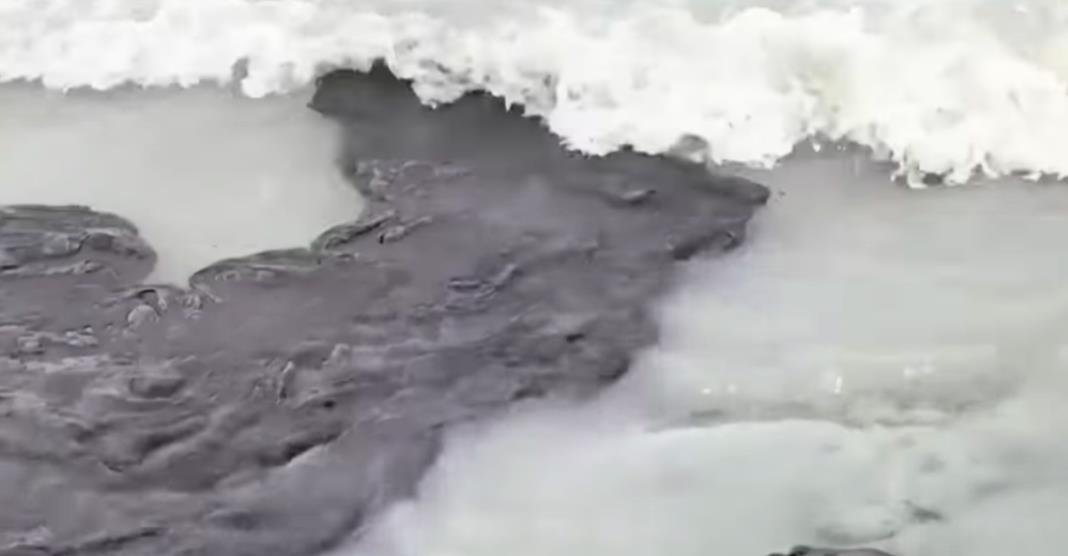卫星图像显示,2024年12月在刻赤海峡沉没的两艘俄罗斯油轮近期出现新的燃油泄漏。
当年12月15日,"伏尔加石油239"号和"伏尔加石油212"号油轮在强风暴中解体,导致大量燃油流入亚速海-黑海水域。
乌克兰绿色和平组织数据显示,约4300吨燃油泄漏。
部分油污被冲上岸,其余则因低温凝固沉入海底。
但专家指出,随着气温回升,海底凝固的燃油正重新上浮形成二次污染。
乌当局与俄科学家最新公布的图像显示,沉船区域附近已出现明显油膜。
2025年3月31日,俄罗斯环保人士卡瓦诺扬发布的雷达图像显示,在刻赤海峡入口处的"伏尔加石油239"号船首残骸附近出现油污带。
专家什克拉久克估计,目前每日仍有数百升燃油持续泄漏,警告整个暖季都可能持续漏油。
环保组织发现,克里米亚占领区及俄罗斯克拉斯诺达尔海岸已出现污染迹象。
预计4月将有更多油污抵达沿岸,詹察伊斯基河口、萨瑟克河口及多瑙河生物圈保护区已报告可见污染。
在图兹利夫斯基利马尼国家公园海滩,工作人员已清理出4公斤凝固燃油,而数百万微小油粒仍漂浮在黑海。
尽管形势恶化,俄当局尚未启动沉船打捞工作,称相关行动明年才会展开。
批评人士指出,俄罗斯政府正通过宣传淡化危机,包括计划派遣数千名儿童前往污染区"疗养"的争议举措,而非采取实质清理行动。
俄紧急情况部否认存在新污染,但环保专家与卫星数据均证实泄漏持续。
该部称正通过巡逻艇、无人机及水下设备每日监测残骸。
环境监督局已对油轮所属公司提起诉讼,索赔850亿卢布(约合11亿美元),指控其船舶在严冬中超限运营。
专家预计彻底清理需至少三年,黑海沿岸生态完全恢复或将耗时五至十年。
▲Screengrab from YouTube video posted by Associated Press
英文原文
Satellite images have revealed new leaks of fuel oil from two Russian tankers that sank in the Kerch Strait in December 2024.
On 15 December 2024, the tankers Volgoneft 239 and Volgoneft 212 broke apart during a severe storm and released large amounts of fuel oil into the waters of Black Sea of Azov.
According to Greenpeace Ukraine, around 4,300 tons of fuel oil was spilt. Part of the oil was thrown onto the shore, while the rest sank to the seabed due to cold temperatures.
However, experts now say that as temperatures rise, more of the oil that had settled underwater is starting to float to the su***ce, leading to fresh spills.
The images recently shared by Ukrainian authorities and Russian scientists show dark slicks near the tanker wreckage site.
On March 31, 2025, Russian environmentalist Georgy Kavanosyan posted a radar image online showing an oil trail at the entrance to the strait, close to the bow section of the sunken Volgoneft 239.
Another expert, Igor Shkradyuk, estimated that hundreds of litres of fuel oil are now leaking into the sea each day and warned the leakage could continue through the warmer months.
Environmental groups believe the impact of the spill is already visible along the coasts of occupied Crimea and Russia’s Krasnodar region.
They expect more fuel oil to reach these shores in April. Areas near the Dzhantsheysky and Sasyk estuaries, as well as the Danube Biosphere Reserve, have already reported visible pollution.
On the beach of Tuzlivski Lymany National Park, officials collected up to 4 kilograms of fuel oil, while millions of small oil particles remain floating in the Black Sea.
Despite the worsening situation, Russian officials have not started recovery efforts to remove the sunken tankers. Authorities say this operation will begin only next year.
Instead of focusing on a real cleanup plan, critics claim the Russian government is trying to show that everything is under control through propaganda.
One controversial move involves sending thousands of children to the affected area for “rehabilitation,” which environmentalists say is an attempt to distract from the crisis.
The Russian Ministry of Emergency Situations denies any new pollution even after the confirmation of ongoing leaks by environmental experts and satellite data.
The ministry stated that it is monitoring the wreck sites daily using patrol boats, drones, satellite technology, and underwater equipment.
Minister Alexander Kurenkov said divers are regularly inspecting the wrecks and surrounding seabed within a kilometre wide zone from the coast.
At the same time, the Russian environmental agency Rosprirodnadzor has filed a lawsuit against the owners of the tankers Kama Shipping and Volgatranseft CFC.
The agency claims the vessels were operating beyond their technical limits in harsh winter conditions. The damages claim amounts to 85 billion rubles (approximately $1 billion).
If the companies do not pay within a month, the agency plans to take the matter to court.
Experts believe that cleanup efforts could take at least three years, while the full recovery of the Black Sea’s coastline may take anywhere from five to ten years.
免责申明:本文根据Ukranews等内容整理,如有误差,以英文为准;仅代表作者观点,不代表中国海员之家立场。其真实性及原创性未能得到中国海员之家证实,在此感谢原作者的辛苦创作,如转载涉及版权等问题,请作者与我们联系,我们将在第一时间处理,谢谢!联系邮箱:cnisu@54seaman.com


 联系我们人工客服
联系我们人工客服



















 :1391995811
:1391995811


评论 (0人参与)